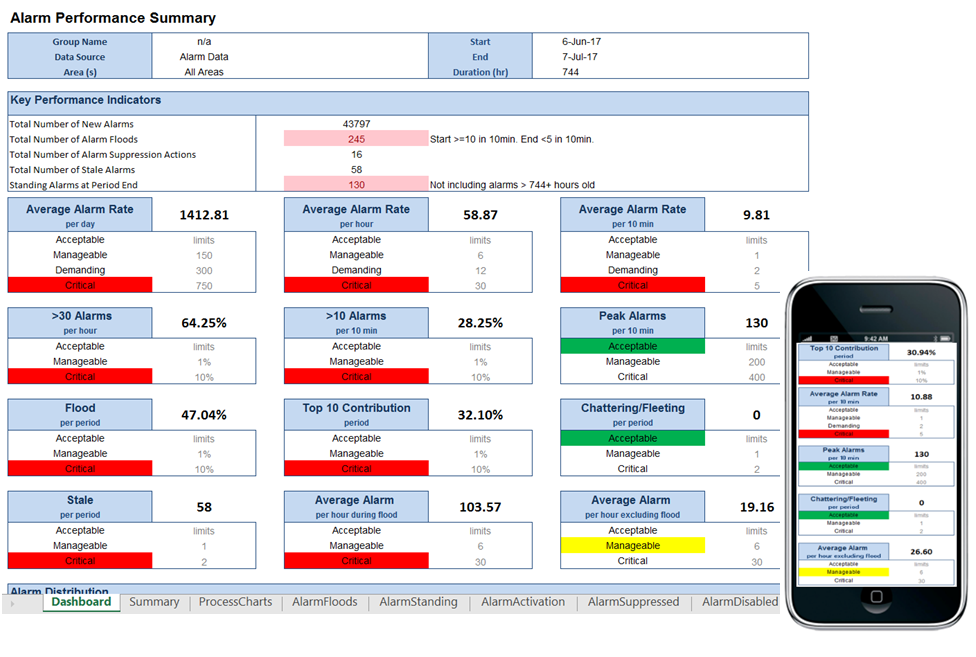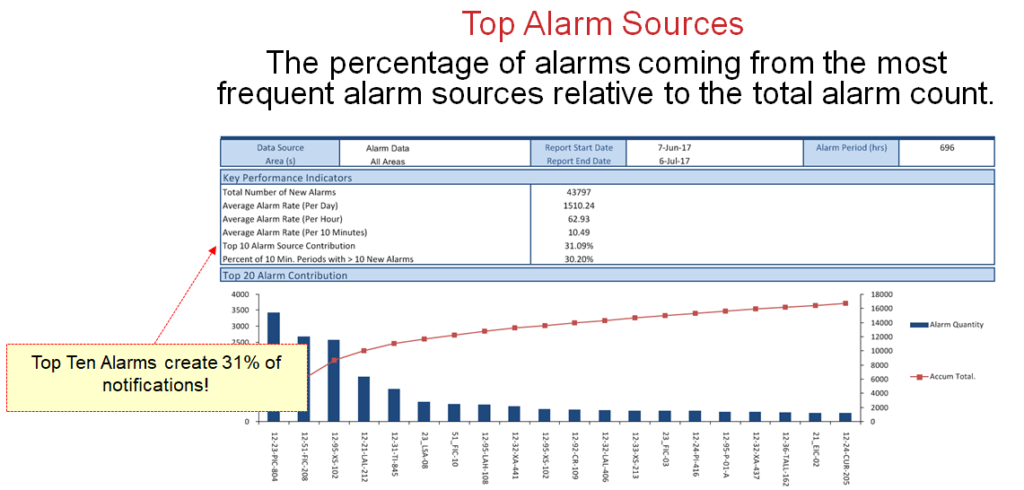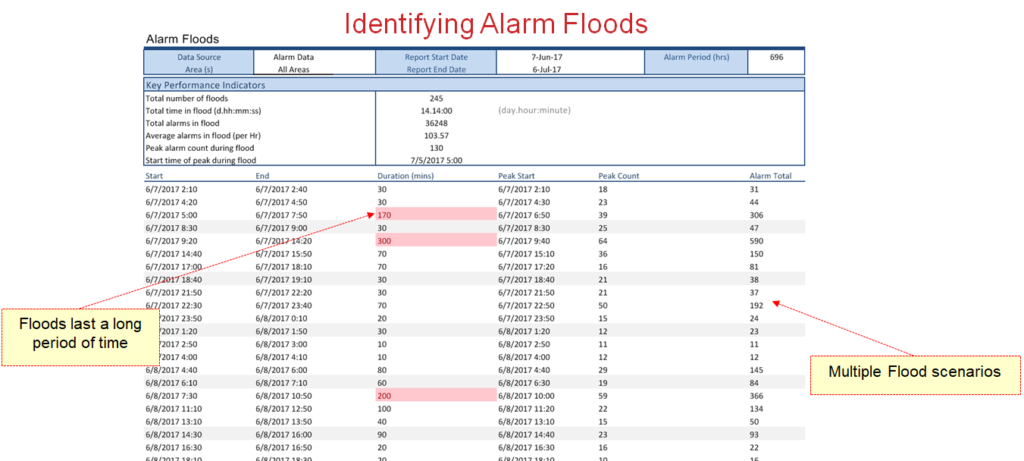ISA 18.2 Alarm Management Is A Journey Not A Destination
What is Alarm Management
According to the ISA 18.2, an alarm is an audible and/or visible means of indicating to the operator an equipment malfunction, process deviation or abnormal condition requiring a response. Unless you have been living in a cave, you have probably come in contact with alarms in your day to day life. You may have seen the “check engine” light come on informing you that there is something wrong with your engine. But what is wrong? This is what separates a well-defined quality alarm from a poorly-defined alarm.
The ISA 18.2 standard provides a framework for monitoring and managing industrial alarm systems, and is considered a recommended and Generally Accepted Good Engineering Practice by regulators and insurance agencies. The standard aims to increase safety in the process and optimize operator response to alarms.

XLReporter’s Advanced Alarms Reporting module provides part of the ISA framework, namely Initial Benchmarking together with on-going Monitoring and Assessment. Users are free of scripting and programming since the module works out-of-box providing powerful information from data generated by alarm software from industry leading vendors.
The purpose of the Alarm Module is to see the wood from the trees, in other words turn raw alarm data (which could be many thousands of data points) into actionable information for change management, ultimately helping to improve the process and reduce costs. The module returns metrics on a bevy of common “villains” in an alarm system.
The Good, the Bad and the Alarming
The presence of these “villains” diminishes the usefulness of the alarm system and “robs” the operator of an important tool. Nuisance alarm include any chattering alarms, stale alarms, frequently occurring bad actor alarms, redundant alarms and alarms that do not require an operator response. Alarm Overload is an excess of alarms that results in the more important alarms being lost in a sea of useless alarms. Alarm Flood (Alarm Shower) is defined as a condition during which the alarm rate is greater than the operator can effectively manage. Much like alarm overload, alarm floods also increase the chance of an operator missing a key alarm or making a response mistake.

The presence of these “villains” diminishes the usefulness of the alarm system and “robs” the operator of focus. These “villains” fall into categories as follows:
Chattering alarms, stale alarms, frequently occurring bad actor alarms, redundant alarms and alarms that do not require an operator response. Alarm Overload is an excess of alarms that results in more important alarms be lost in a sea of useless alarms.

Alarm Flood (Alarm Shower) is defined as a condition during which the alarm rate is greater than the operator can effectively manage. Much like alarm overload, alarm floods also increase the chance of an operator missing a key alarm or making a response mistake.
Incorrect Alarm Priority is also a dubious “villain” to combat in alarm management. It is exactly what it sounds like, the measured priority of alarms is mismanaged which can result in problems like too many high priority alarms, reduced operator confidences in the system, and/or inconsistent use of priority alarms, reduced operator confidences in the system, and/or inconsistent use of priority that makes it difficult to gauge urgency of response.
Sounds Complicated. How do I generate this report?
The ISA 18.2 Alarm Management Report works with no configuration on the part of the user. Simply define a Data Connector to your alarms database, and XLReporter does the rest. You can immediately open a viewer window to review ISA-compliant scores and ratings for metrics like stale and chattering alarms, alarm floods, and more.